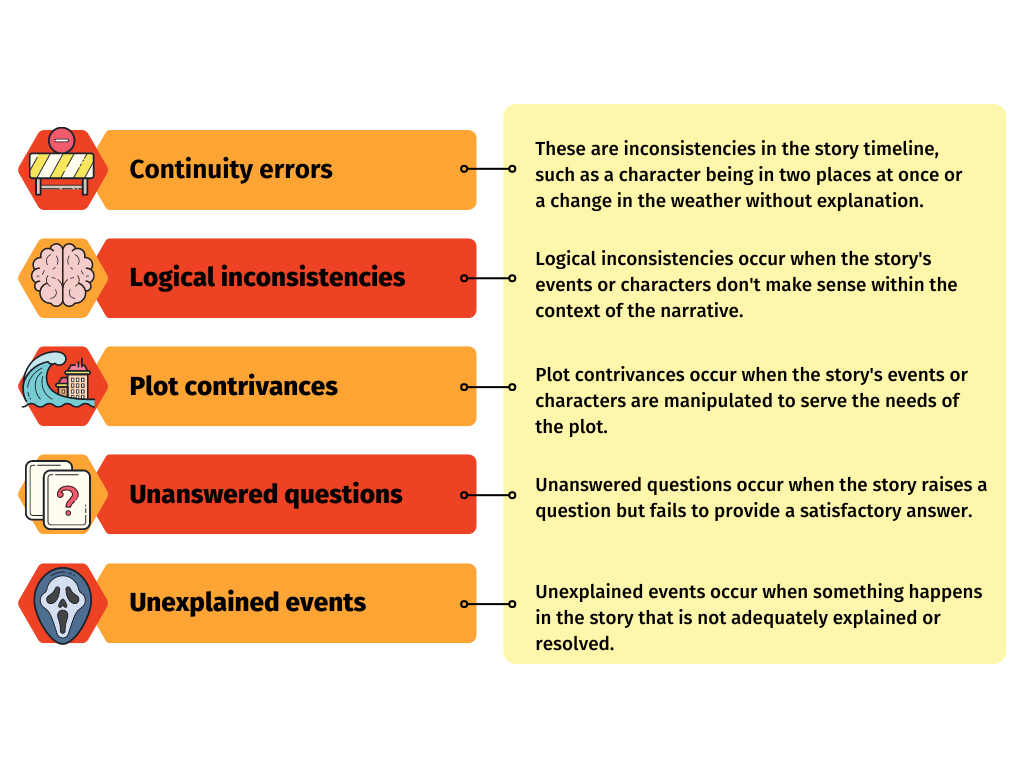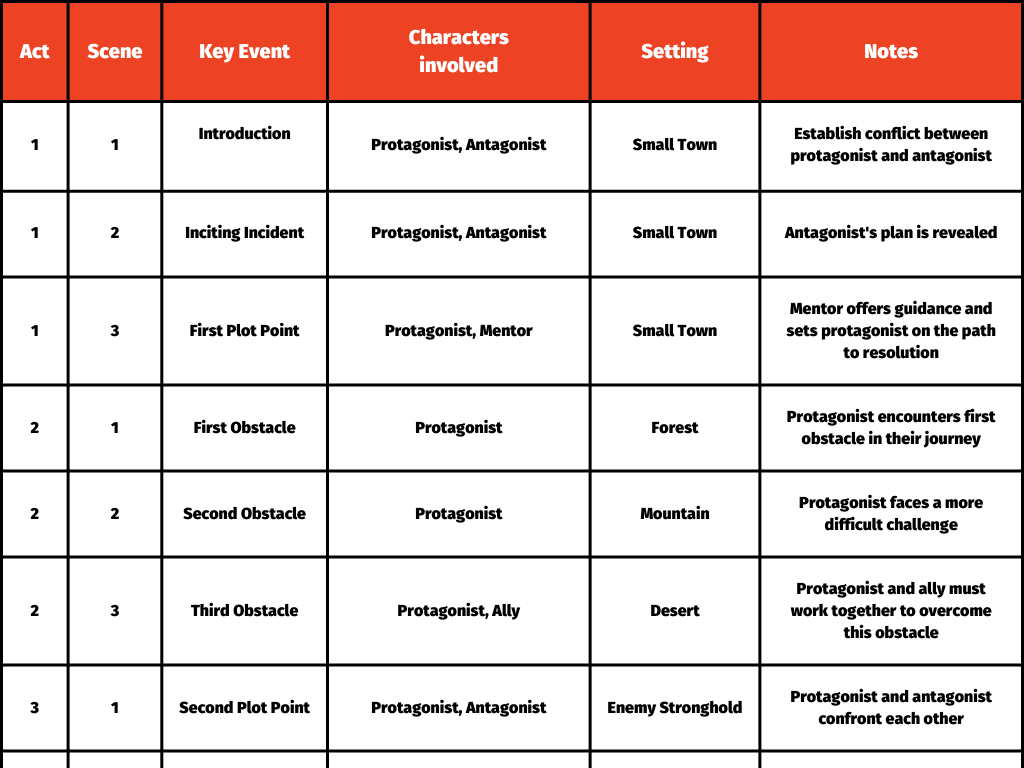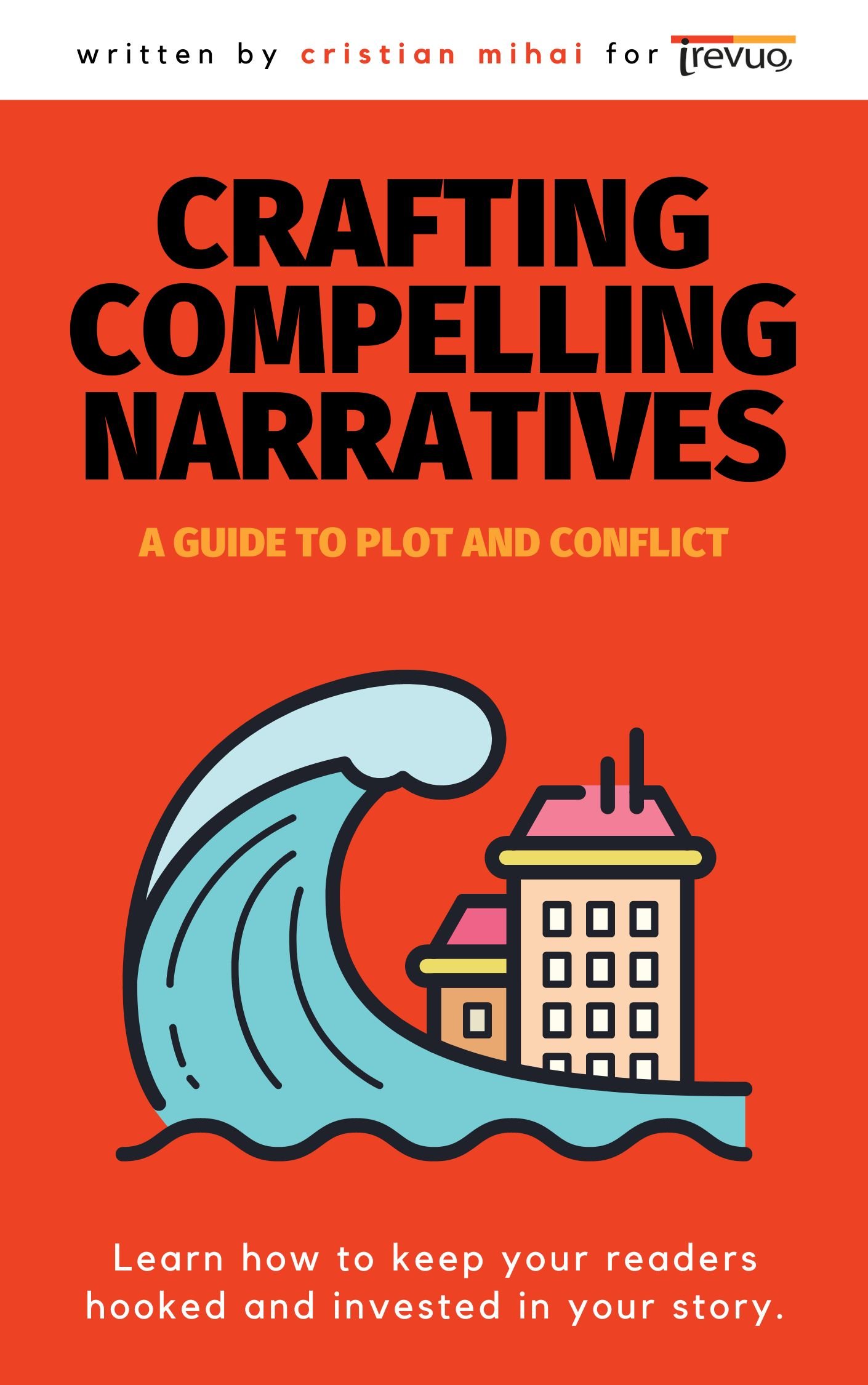Picture this: You're in a boxing match with your own brainchild, your story. It's round 10 and you're gasping for breath, bloodied but determined. You've got the concept, the characters, and their motivations. You've built a world as vivid as the scarlet smear of sunset. But there, in the corner of the ring, a plot hole lurks. Your creation lands a sucker punch right into that gaping abyss and suddenly, it's lights out. Your story loses credibility. The crowd's cheering turns to jeers.
Your characters, once full of life and promise, now feel like guests who've overstayed their welcome at a party. Your plot, once a sleek racehorse, has turned into a three-legged donkey. You've got a literary Titanic on your hands, and guess what? You've just hit an iceberg.
Plot holes. They're the black holes of storytelling, swallowing narratives whole and spitting out disillusioned readers. But here's the good news: they're not death sentences. No, they're more like unsightly pimples on prom night. Unwanted, yes. But fixable. With the right tools and a pinch of audacity, you can navigate through them. You can tie up loose ends, smooth out wrinkles, and stitch together a tale that leaves your readers breathless.
So pull up a chair, crack your knuckles, and let's dive headfirst into this narrative battlefield. Let's make Hemingway proud. Let's play God in our own literary universes. Because when you've got the reader in the palm of your hand, there's no room for plot holes. Only possibilities.
The What
A plot hole is a gap or inconsistency in a story's plot that undermines its coherence or logic. It can occur when an event in the story contradicts established facts or when the story fails to provide adequate explanations for certain events or actions. Plot holes can make a story confusing, unconvincing, or unsatisfying for readers.
Here are some examples of plot holes from famous novels:
- In Harry Potter and the Goblet of Fire by J.K. Rowling, there is a plot hole related to the Triwizard Tournament. The tournament is described as being impossible to enter if you are under 17 years old, yet Harry is able to enter despite being underage. This is explained in the book as being due to a magical loophole, but some readers still find it to be a plot hole.
- In The Hunger Games by Suzanne Collins, there is a plot hole related to the mutations in the arena. The mutations are described as being genetically engineered creatures created by the Capitol, but it is never explained how they were able to create such complex creatures with the limited technology available in the story's world.
- In The Da Vinci Code by Dan Brown, there is a plot hole related to the cryptex. The cryptex is a device used to protect a secret message, but it is never explained how the device is able to differentiate between different languages or character sets.
- In The Hitchhiker's Guide to the Galaxy by Douglas Adams, there is a plot hole related to the Babel fish. The Babel fish is a creature that can be inserted into a person's ear to allow them to understand any language. However, it is never explained how the Babel fish is able to translate languages that the person has never heard before.
- In The Girl on the Train by Paula Hawkins, there is a plot hole related to the timeline of events. The timeline is described as being linear, but it is later revealed that certain events took place at different times than originally stated. This creates confusion for readers and undermines the narrative's credibility.
Types of Plot Holes
There are several types of plot holes that writers should be aware of:

- Continuity errors: These are inconsistencies in the story timeline, such as a character being in two places at once or a change in the weather without explanation.
- Logical inconsistencies: Logical inconsistencies occur when the story's events or characters don't make sense within the context of the narrative. For example, if a character suddenly changes their behavior without explanation, it can create a logical inconsistency that undermines the reader's suspension of disbelief.
- Plot contrivances: Plot contrivances occur when the story's events or characters are manipulated to serve the needs of the plot. For example, if a character suddenly gains a new skill or ability that is necessary to advance the plot, it can feel contrived and unrealistic.
- Unanswered questions: Unanswered questions occur when the story raises a question but fails to provide a satisfactory answer. For example, if a character's backstory is hinted at but never explained, it can create a sense of frustration and confusion for the reader.
- Unexplained events: Unexplained events occur when something happens in the story that is not adequately explained or resolved. For example, if a character dies suddenly without explanation, it can create a sense of confusion and frustration for the reader.
By being aware of these types of plot holes, writers can take steps to avoid them and create stories that are free of inconsistencies and logical gaps.
Avoiding Plot Holes
To avoid plot holes, you need to be meticulous in your planning and execution. Here are some tips for you to identify and avoid plot holes:
- Create a detailed outline: A detailed outline can help you identify potential plot holes before they become a problem. By writing down your story's key events and character arcs, you can ensure that the plot remains focused and coherent.
- Check for consistency: Consistency is key to avoiding plot holes. You should double-check that your story's events, characters, and settings remain consistent throughout the narrative.
- Think about cause and effect: Every action in the story should have a logical cause and effect. You should consider the consequences of each event and decision to ensure that they make sense within the context of the story.
- Consider the reader's perspective: You should put yourself in the reader's shoes and think about how they might interpret the story. This can help you identify potential plot holes and inconsistencies from the reader's perspective.
- Get feedback: Feedback from beta readers or writing groups can help you identify potential plot holes and inconsistencies. Other readers may notice things that you have missed, providing valuable insight into how the story is perceived.
- Edit and revise: The editing and revision process is essential to creating a polished and professional story. By editing and revising your work multiple times, you can catch and fix potential plot holes before they become a problem.
- Consider alternative perspectives: When writing a story, it's important to consider different perspectives and interpretations. This can help you identify potential plot holes and inconsistencies and ensure that your story is accessible to a wider audience.
By using these strategies, you can avoid plot holes and create stories that are engaging, coherent, and satisfying.
Plot Mapping
Another way to avoid plot holes is to map out the story's plot before writing.

Designing a canvas to map out your plot points can help you visualize the structure of your story and identify potential plot holes by ensuring that each event is logically connected and flows into the next.
Tips and Tricks
- Start with a rough outline: Before creating a detailed plot map, it can be helpful to start with a rough outline of the story's key events and turning points. This can help you ensure that the plot remains focused and coherent.
- Use a visual format: A visual format, such as a table or flowchart, can be helpful for mapping out the story's structure and identifying potential plot holes.
- Consider different perspectives: When mapping out the story's structure, it's important to consider different perspectives and interpretations. This can help you identify potential plot holes and inconsistencies and ensure that your story is accessible to a wider audience.
- Keep it flexible: A plot map is a tool, not a strict set of rules. It's important to remain flexible and open to changes as the story develops.
Mistakes to Avoid
- Being too rigid: While a plot map can be a helpful tool, it's important not to become too rigid in its use. The story should remain fluid and open to changes as it develops.
- Focusing too much on structure: While structure is important, it's also important to focus on character development, dialogue, and other elements that make the story engaging and interesting.
- Ignoring feedback: Feedback from beta readers or writing groups can be valuable for identifying potential plot holes and inconsistencies. It's important to remain open to feedback and willing to make changes as necessary.
By keeping these tips and tricks in mind and avoiding common mistakes, you can create a plot mapping canvas that is both effective and flexible.
Fixing Plot Holes
Identifying a plot hole after a story has been written can pose a challenge. However, there are various ways to remedy the situation without compromising the plot. Here are some ways to fix plot holes:
- Rewrite the scene: If there is a plot hole in a specific scene, you may need to rewrite it to fix the inconsistency or gap. For instance, you can add more details to make the scene more coherent with the plot.
- Add explanation: If a plot hole occurs due to a lack of explanation, you may need to add additional information or backstory to fill in the gap. This can help to create a more believable and engaging story. For example, you can provide more context by describing the characters or setting in more detail.
- Change the plot: If a plot hole cannot be fixed through minor revisions, you may need to change the plot or events of the story to eliminate the inconsistency or gap. For instance, you can change the outcome of a character's decision to make the story more coherent.
- Cut the scene: If a plot hole cannot be fixed and removing it does not impact the overall narrative, you may need to cut the scene entirely. This can help to streamline the story and make it more coherent for readers.
- Add a flashback: If a plot hole occurs due to a lack of backstory or explanation, you may need to add a flashback that provides additional context or information. This can help to fill in the gap and make the story more complete.
- Add a new character: If a plot hole occurs due to a lack of explanation or motivation, you may need to add a new character that can provide additional information or move the plot forward. For example, you can introduce a new character that has a connection to the main character to provide more insight into their backstory.
- Change the timeline: If a plot hole occurs due to a timeline inconsistency or gap, you may need to change the order of events or adjust the timeline to make the story more coherent. For instance, you can add more details to the timeline to create a more logical sequence of events.
- Add a new subplot: If a plot hole occurs due to a lack of depth or complexity, you may need to add a new subplot that explores a different aspect of the story or introduces a new conflict. This can help to add depth to the story and create more interest for readers.
- Remove unnecessary details: If a plot hole occurs due to an overload of unnecessary details, you may need to remove some details to simplify the story and make it more coherent. For example, you can trim down descriptions of the setting to keep the story moving forward.
- Use a time jump: If a plot hole occurs due to a timeline inconsistency or gap, you may need to use a time jump to skip over the problematic event or timeline. This can help to remove the inconsistency or gap and keep the story moving forward. For instance, you can fast-forward the timeline to avoid the problematic event.
- Add a new character motivation: If a plot hole occurs due to a lack of character motivation or explanation, you may need to add a new character motivation or explanation to fill in the gap. This can help to create a more believable and engaging story. For example, you can provide more insight into why a character made a particular decision.
- Add a new scene: If a plot hole occurs due to a missing scene or explanation, you may need to add a new scene or explanation to fill in the gap. This can help to create a more complete and satisfying story. For instance, you can add a scene that provides more context into the character's backstory or motivation.
As writers, we have the power to transport readers to different worlds and make them care deeply about the characters we create. However, plot holes can be the downfall of an otherwise great story.
By taking the time to identify and address any loose ends, we can create a more cohesive and satisfying reading experience for our audience.
Remember, the devil is in the details, and the smallest loose end can unravel an entire plot. So, take the time to carefully craft your story, and don't be afraid to revisit it with a critical eye. Your readers will thank you for it, and you'll be proud of the masterpiece you've created.




Comments ()